As I dance eye to eye with one dolphin, a second dolphin will often be dancing with us, in perfect unison with the other dolphin. Sometimes even more dolphins join in, always in beautiful synchrony with the rest.
The precise coordination of the dolphins movements never ceases to amaze me, not only because it is so thrilling to experience, but because it speaks so clearly of the intentionality of the dolphins’ participation and also of the cooperative relationships between the individuals. Amid a group of beautifully synchronous dolphins, I wonder – can humans join together in this way? Can humans be harmonious and unified enough so that a second, even third human dancer could join in the swirl as elegantly as two or three dolphins might join in?
This was the challenge for Kathleen, Ben and me during a recent rehearsal week.
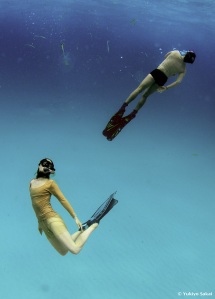
Working with a resident pod of Atlantic Spotted Dolphins, we explored how to move in synchrony with the dolphins and with each other. We were fortunate to be on this trip with talented photographers Yukiyo Sakai and Takaji Ochi, a highly regarded nature photographer in Japan.
Kathleen, Ben and I all have experience dancing with dolphins. Yet joining another human dancer in a swirl of dolphins was not always easy…or even possible. Just keeping track of each other in the water was often difficult, with masks limiting our view. How do we keep our bodies aligned with each other when we are too close to see the other person fully? or when the other person is above, to the side, or otherwise out of view?
As we worked, we experienced what we already knew – that the dolphins are much more expert in this dance than we humans are. With eyes on the sides of their heads, their field of view is much, much wider than ours…their bodies are streamlined with no arms and legs to dangle this way and that…their skin is exquisitely sensitive to the flow of water all around them. For them to stay in sync seems much easier than it is for us.
For dolphins, it seems, unison is not only a skill for which they are anatomically and physiologically well-equipped, but an activity that is necessary for survival and full of social meaning.
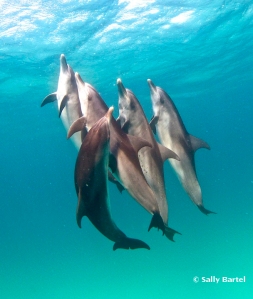 The smallest calves are expert at following their mothers’ every move, maintaining ‘baby position’ under mom’s belly everywhere she goes. By necessity – mother can’t hold the baby’s hand or strap him on her back or in a stroller. Slightly older, juvenile dolphins tumultuously swirl around but then suddenly transform into an orderly unit as one of the moms or older siblings – a babysitter – rounds up the troops.No doubt that moving in synchrony helps keep the pod – and especially its youngsters – safe from harm amid the ocean’s vast expanse. Perhaps through its lifelong practice, synchronous movement even becomes an expression of unity that gives the dolphins a sense of belonging or safety.
The smallest calves are expert at following their mothers’ every move, maintaining ‘baby position’ under mom’s belly everywhere she goes. By necessity – mother can’t hold the baby’s hand or strap him on her back or in a stroller. Slightly older, juvenile dolphins tumultuously swirl around but then suddenly transform into an orderly unit as one of the moms or older siblings – a babysitter – rounds up the troops.No doubt that moving in synchrony helps keep the pod – and especially its youngsters – safe from harm amid the ocean’s vast expanse. Perhaps through its lifelong practice, synchronous movement even becomes an expression of unity that gives the dolphins a sense of belonging or safety.
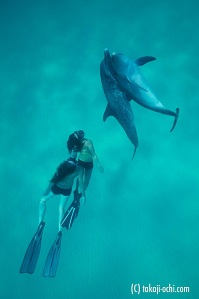
To think that the dolphins willingly invite humans into this dance of inclusiveness seems incredibly generous and trusting. It is hard not to feel grateful, being allowed to join the dolphins in this intimate way. It gives us motivation to learn to communicate through this important ‘dolphin idiom’ of synchrony as we work towards an ever-more communicative interspecies dance with them.
[See more of our rehearsal photos in a Flickr slideshow]
To support the development of future dance films and an upcoming documentary, please visit our Donate page, download our first film “Together“, and share our project with all your dolphin loving friends and family.


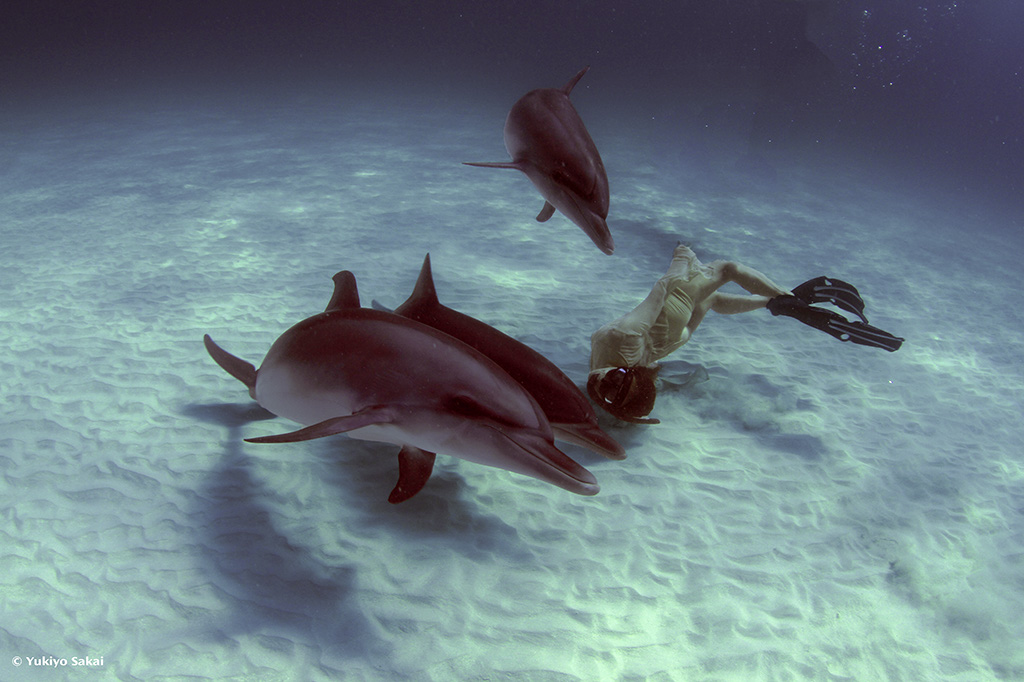

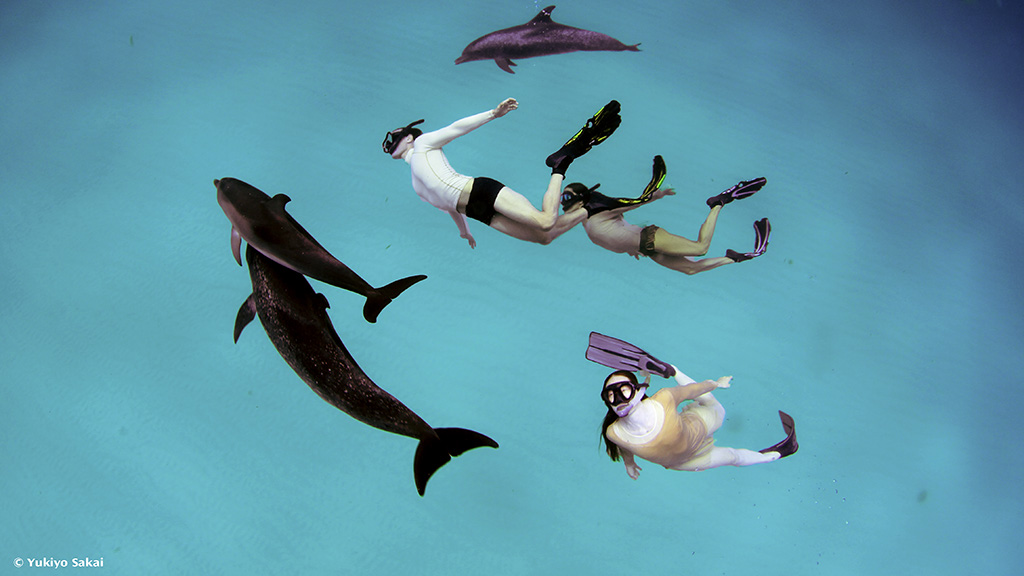

If only we could be in tune with each other like the dolphins are.